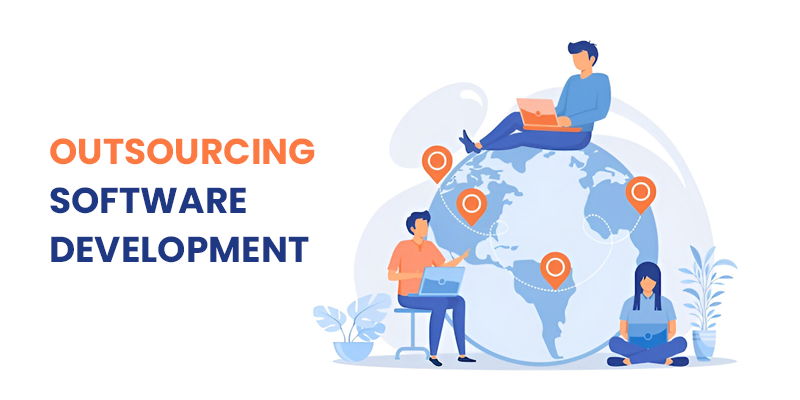The Ultimate Guide to Outsourcing Software Development in 2025
Introduction
Outsourcing software development is a strategic move for businesses aiming to scale efficiently, cut costs, and access top-tier global talent. As 2025 approaches, outsourcing continues to evolve, incorporating new trends, technologies, and best practices. This guide explores the benefits, challenges, and key strategies for successfully outsourcing software development in today’s competitive market.Why Outsource Software Development?
Outsourcing offers numerous advantages, making it an attractive option for startups, enterprises, and growing businesses. Here are some key benefits:1. Cost Efficiency
Hiring an in-house development team involves high costs, including salaries, benefits, infrastructure, and training. Outsourcing allows businesses to access skilled developers at a fraction of the cost, particularly in regions with lower operational expenses.
2. Access to Global Talent
With outsourcing, businesses can hire top-tier developers worldwide, ensuring that projects benefit from the latest industry expertise and innovation.
3. Faster Time to Market
Outsourced teams specialize in quick project turnaround, helping businesses accelerate product releases and stay ahead of competitors.
4. Focus on Core Business Functions
Delegating software development tasks allows businesses to focus on core operations, such as sales, marketing, and customer relations.
5. Scalability & Flexibility
Outsourcing enables businesses to scale teams up or down based on project needs, providing flexibility and cost savings.
Challenges of Outsourcing Software Development
While outsourcing is beneficial, it comes with challenges that businesses must address:1. Communication & Time Zone Barriers
Different time zones and language differences can cause delays. Choosing a team with strong communication skills and overlapping work hours is crucial.
2. Quality Assurance
Not all outsourcing vendors provide high-quality work. It’s essential to vet developers thoroughly, check client reviews, and request portfolio samples before making a decision.
3. Data Security Risks
Outsourcing software development means sharing sensitive data. Implementing non-disclosure agreements (NDAs) and security protocols helps protect intellectual property and user data.
4. Hidden Costs
Unexpected costs may arise due to scope changes or additional revisions. To avoid this, businesses should clearly define project scope and contract terms upfront.
Best Practices for Successful Outsourcing in 2025
To ensure a smooth outsourcing experience, follow these best practices:1. Define Clear Goals & Expectations
Before outsourcing, outline the project scope, objectives, and success criteria to ensure alignment between stakeholders.
2. Choose the Right Outsourcing Model
- Onshore Outsourcing – Working with teams in the same country.
- Nearshore Outsourcing – Hiring teams in nearby countries with similar time zones.
- Offshore Outsourcing – Partnering with teams in distant countries for cost benefits.
- Hybrid Model – Combining in-house and outsourced teams for optimal results.
3. Select a Reliable Outsourcing Partner
Research outsourcing vendors using platforms like Clutch, Upwork, and Toptal. Consider experience, client testimonials, and industry expertise before finalizing a partner.
4. Leverage Project Management & Communication Tools
Use tools like Slack, Zoom, Microsoft Teams, Trello, and Jira to streamline project management and communication.
5. Ensure Compliance with Security Standards
Choose a vendor that follows industry security standards like GDPR, HIPAA, and ISO 27001 to protect business data.
6. Monitor Performance with KPIs
Set clear Key Performance Indicators (KPIs) such as code quality, on-time delivery, and customer satisfaction to track progress effectively.
Emerging Trends in Software Development Outsourcing
As technology advances, outsourcing is evolving with new trends shaping the future of software development:1. AI-Powered Development
Artificial Intelligence is streamlining development workflows with tools like GitHub Copilot, ChatGPT, and TensorFlow.
2. Cloud-Based Development
Cloud platforms like AWS, Azure, and Google Cloud are facilitating seamless remote collaboration and deployment.
3. Blockchain for Secure Transactions
Smart contracts on Ethereum and Hyperledger are ensuring transparent, automated agreements between businesses and outsourcing vendors.
4. No-Code/Low-Code Development
The rise of no-code and low-code platforms is enabling faster development with minimal coding expertise.
5. Enhanced Cybersecurity Measures
With increasing cyber threats, businesses are prioritizing cybersecurity outsourcing to safeguard digital assets.

